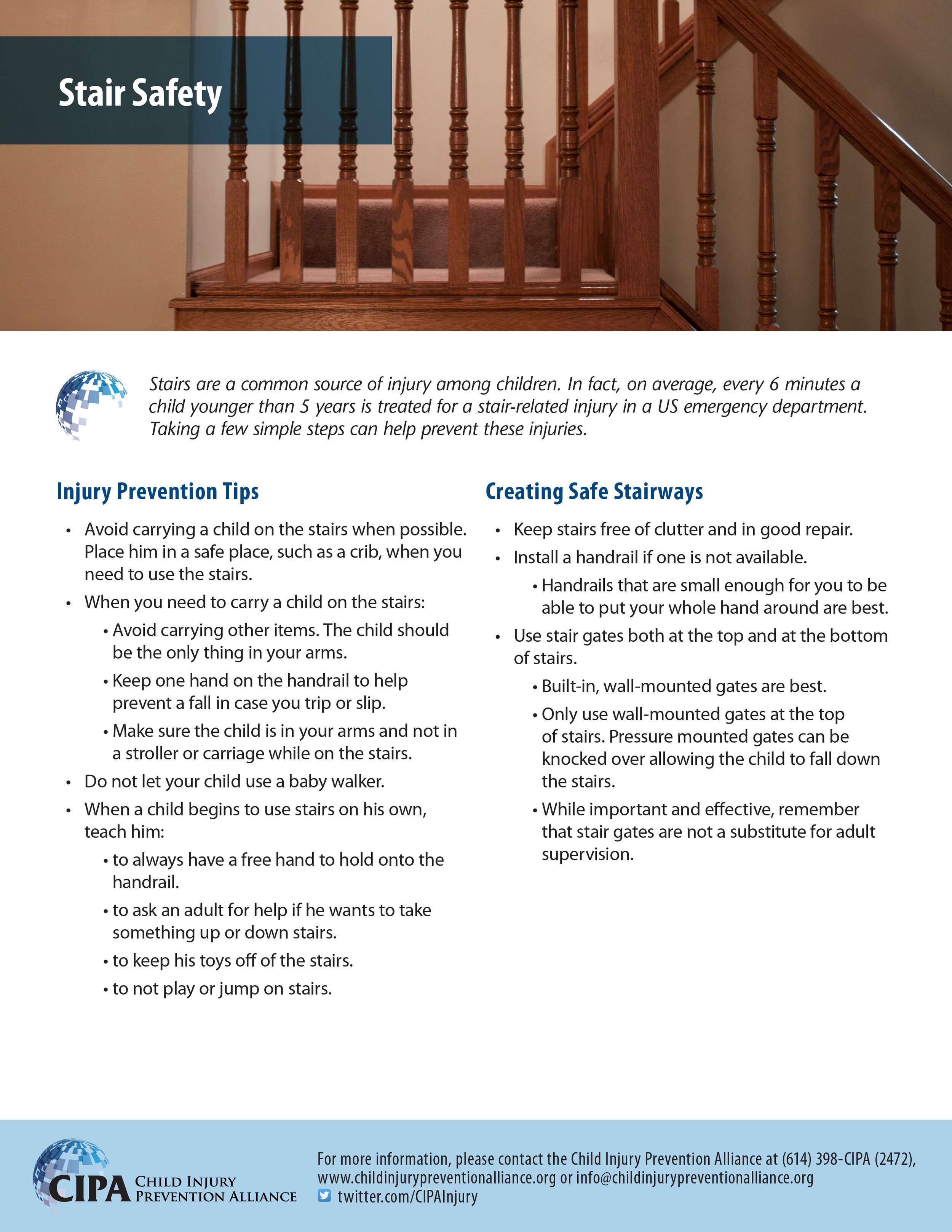Stair Safety
Stairs are a common source of injury among children. In fact, on average, every 6 minutes a child younger than 5 years is treated for a stair-related injury in a U.S. emergency department.
Stair Safety
Stairs are a common source of injury among children. In fact, on average, every 6 minutes a child younger than 5 years is treated for a stair-related injury in a U.S. emergency department. Taking a few simple steps can help prevent these injuries.
INJURY PREVENTION TIPS
- Avoid carrying a child on the stairs when possible. Place him in a safe place, such as a crib, when you need to use the stairs.
- When you need to carry a child on the stairs:
- Avoid carrying other items. The child should be the only thing in your arms.
- Keep one hand on the handrail to help prevent a fall in case you trip or slip.
- Make sure the child is in your arms and not in a stroller or carriage while on the stairs.
- Do not let your child use a baby walker.
- When a child begins to use stairs on his own, teach him:
- to always have a free hand to hold onto the handrail.
- to ask an adult for help if he wants to take something up or down stairs.
- to keep his toys off of the stairs.
- and to not play or jump on stairs.
CREATING SAFE STAIRWAYS
- Keep stairs free of clutter and in good repair.
- Install a handrail if one is not available.
- Handrails that are small enough for you to be able to put your whole hand around are best.
- Use stair gates both at the top and at the bottom of stairs.
- Built-in, wall-mounted gates are best.
- Only use wall-mounted gates at the top of stairs. Pressure mounted gates can be knocked over allowing the child to fall down the stairs.
- While important and effective, remember that stair gates are not a substitute for adult supervision.
Content provided by the Center for Injury Research and Policy at Nationwide Children’s
